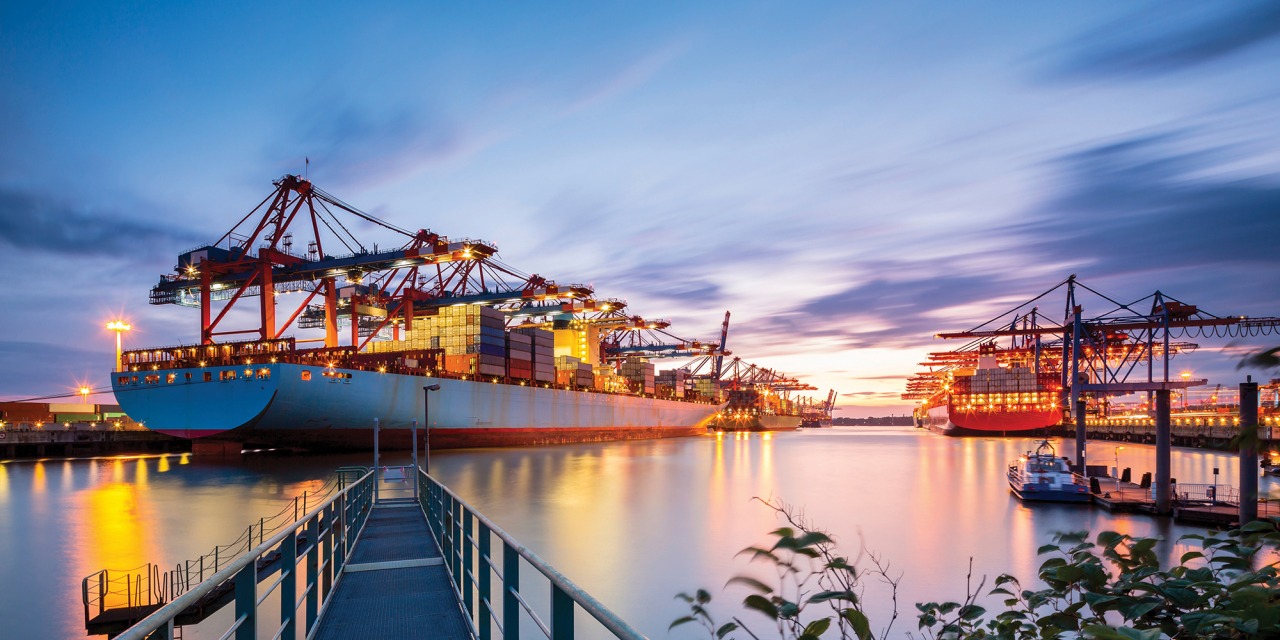
Business Intelligence, Policy Advocacy, Networking, Business Expansion
According to the Ministry of Shipping, around 95 per cent of India's trading by volume and 70 per cent by value is done through maritime transport.
India has 12 major and 205 notified minor and intermediate ports. Under the National Perspective Plan for Sagarmala, six new mega ports will be developed in the country. The Indian ports and shipping industry plays a vital role in sustaining growth in the country’s trade and commerce.
India is the sixteenth largest maritime country in the world, with a coastline of about 7,517 km. The Indian Government plays an important role in supporting the ports sector. It has allowed Foreign Direct Investment (FDI) of up to 100 per cent under the automatic route for port and harbour construction and maintenance projects. It has also facilitated a 10-year tax holiday to enterprises that develop, maintain and operate ports, inland waterways and inland ports.
Market Size
During FY18, cargo traffic at major ports in the country was reported at 679.36 million tonnes (MT). In FY19P (up to February 2019) traffic increased by 2.79 per cent year-on-year to reach 633.87 million tonnes. Cargo traffic at non-major ports was estimated at 491.95 million tonnes FY18 and grew at 9.2 per cent CAGR between FY07-18.
The major ports had a capacity of 1,452 million tonnes by FY18 end. The Maritime Agenda 2010-20 has a 2020 target of 3,130 MT of port capacity.
The government has taken several measures to improve operational efficiency through mechanisation, deepening the draft and speedy evacuations.
Investments/Developments
• Essar Ports will invest US$ 70 million in Hazira port by 2020.
• The Indian Minister for Shipping, Road Transport and Highways, Mr Nitin Gadkari, announced a massive investment in India’s ports and roads sector, which is likely to help boost the country’s economy. The Indian government plans to develop 10 coastal economic regions as part of plans to revive the country’s Sagarmala (string of ports) project.
• The zones would be converted into manufacturing hubs, supported by port modernisation projects, and could span 300–500 km of the coastline. The government is also looking to develop the inland waterway sector as an alternative to road and rail routes to transport goods to the nation’s ports and hopes to attract private investment in the sector.
• Ports sector in India has received a cumulative FDI of US$ 1.64 billion between April 2000 and December 2018.
• Indian ports and shipping sector witnessed three M&A deals worth US$ 29 million in 2017.
Government Initiatives
Some of the major initiatives taken by the government to promote the ports sector in India are as follows:
• Net profit at major ports has increased from Rs 1,150 crore (US$ 178.4 million) in FY13 to Rs 3,413 crore (US$ 529.6 million) in FY18 while operating margin increased from 23 per cent to 44 per cent.
• In May 2018, Ministry of Shipping allowed foreign flagged ships to carry containers for transshipment.
• In March 2018, a revised Model Concession Agreement (MCA) was approved to make port projects more investor-friendly and make investment climate in the sector more attractive.
Achievements
•Following are the achievements of the government in the past four years:
• Five times more growth in major ports’ traffic between 2014-18, compared to 2010-14.
• Increased efficiency has led three times increase in net profits of major ports between FY14-18.
• Turnaround time at major ports reduced to 64 hours in FY18 from 94 hours in FY14.
• Project UNNATI has been started by Government of India to identify the opportunity areas for improvement in the operations of major ports. Under the project, 116 initiatives were identified out of which 91 initiatives have been implemented as of November 2018.
Road Ahead
Increasing investments and cargo traffic point towards a healthy outlook for the Indian ports sector. Providers of services such as operation and maintenance (O&M), pilotage and harbouring and marine assets such as barges and dredgers are benefiting from these investments.
The capacity addition at ports is expected to grow at a CAGR of 5-6 per cent till 2022, thereby adding 275-325 MT of capacity.
Under the Sagarmala Programme, the government has envisioned a total of 189 projects for modernisation of ports involving an investment of Rs 1.42 trillion (US$ 22 billion) by the year 2035.
Ministry of Shipping has set a target capacity of over 3,130 MMT by 2020, which would be driven by participation from the private sector. Non-major ports are expected to generate over 50 per cent of this capacity.
India’s cargo traffic handled by ports is expected to reach 1,695 million metric tonnes by 2021-22, according to a report of the National Transport Development Policy Committee.
Within the ports sector, projects worth an investment of US$ 10 billion have been identified and will be awarded over the coming five years.